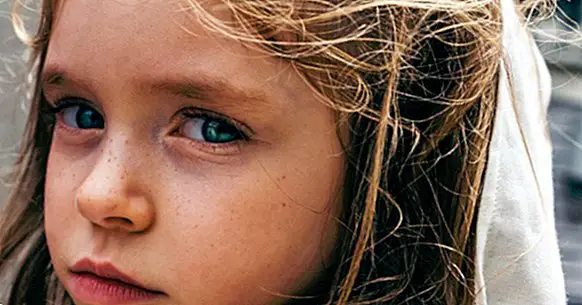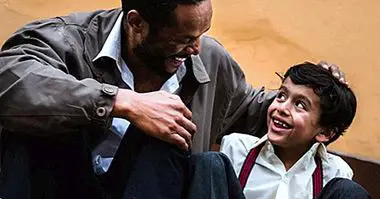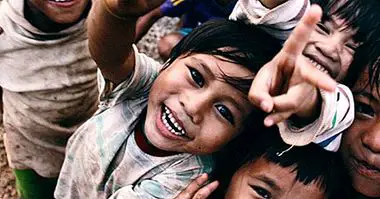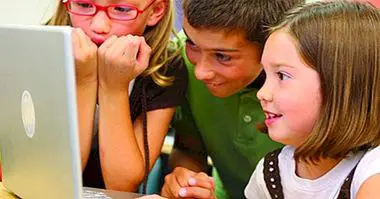Good school does not stifle creativity, it enhances children's talent
Often the educational system is criticized for using a methodology based on rigidity and in the memorization of contents. Only in a few countries, such as Finland, is this model being questioned, and currently crowded classes are still normal and the impossibility of offering an adapted treatment to each child.
But the minds of children have too much potential as if to try to channel it along the path of an education based on standardized tests and lessons in which the professors speak and the students remain silent. It does not make any sense that, in the life stage in which we are more psychologically flexible, we are trying to limit ourselves when developing those competences through which we want to guide our vocation.
- Maybe you're interested: "The KiVa method, an idea that is ending bullying"
The infant brain
If we take a look at the brains of boys and girls of age to start school, we will see that its number of neurons is not less than that of an adult brain . How can it be, then, that they master so little certain psychological skills that become normal after coming of age? The answer to this has to do with the same phenomenon that makes children so quick learning certain abilities: neuroplasticity.
This characteristic is the way in which the human brain (and all its nervous system in general) adapts to the experiences that are going on . During the first two decades of life, the evolution of cognitive abilities that we experience is explained because, during this time, the neurons begin to interconnect massively with each other according to what we are experiencing.
If we are not born knowing how to speak it is not because we lack neurons, but because they are still little related to each other. The same goes for many other competitions.
In other words, the younger ones are specially trained to develop a potential that runs parallel to the way in which their nerve cells create a network of connections in the brain . If they do not know how to do many things it is because they have the opportunity to learn all kinds of skills, instead of building on skills that already dominate from the beginning and that would limit the ways in which they express their creativity.
- Related article: "Brain plasticity (or neuroplasticity): what is it?"
The school as a place of opportunities
If the school should be a place where the capacities of the youngest are strengthened, this project can not do without the concept of creativity . It's not just that it's a beautiful, fashionable value and that we like how it sounds; is that children's learning is characterized as fundamentally a creative process. Start almost from scratch, ask questions that most adults ignore, create new mental routes that link very different forms of knowledge, etc.
You can not pretend that the classrooms are a place where academic content is transmitted as if it were data stored in a USB. You have to connect with the mental world of the little ones , those psychological realms that they themselves have built and that do not have to be governed by the logic of adult thinking, and make that learning meaningful within that framework of creativity. But what is usually done is not that.
The limitations of the educational model
There are several things that make creativity not taken into account in school.
The first is that childish creative thinking is uncomfortable if you only think about building students that get good grades . In many subjects, lateral thinking tends to get out of the paths that arise in exams.
Understand them it would take a lot of time and effort to understand the mental patterns of each boy or girl, and in a society with mass classes that is not possible. It is easier to show that the scores on the tests reflect the quality of education and turn the page, although these results are the result of a memorization of content that is not understood and therefore will be forgotten within a few days.
Those responsible are not the teachers , who do what they can with the resources they have; it is from governments that underestimate education and those on which their power is based.
The second reason is that learning based on creativity is not very profitable if what is wanted is to educate to create future workers. Lately it has become very fashionable to demand that schools and places where young people learn how the world of work is, but this has perverse consequences that are rarely questioned.
The labor market tends to reject creativity except in some very specific and well-paid positions.Most workers are paid for doing very specific tasks and for doing so fitting well into the hierarchy of organizations, without questioning their superiors too much. Defending that idea only leads to limit the options of the small ones to those that are more profitable.
Are we forming people, or future workers? At what point was it decided that education has value as a preparation for the labor market?
Expanding the potential of small
Committing to an education that allows children to expand their creativity instead of limiting it to fit in the world of adults is a challenge that can not only be based on will and good wishes.
Material changes are necessary in the functioning of public education, such as demanding non-massified classrooms and reviewing the evaluation format. In Finland they have already started doing it. When will our turn?



















